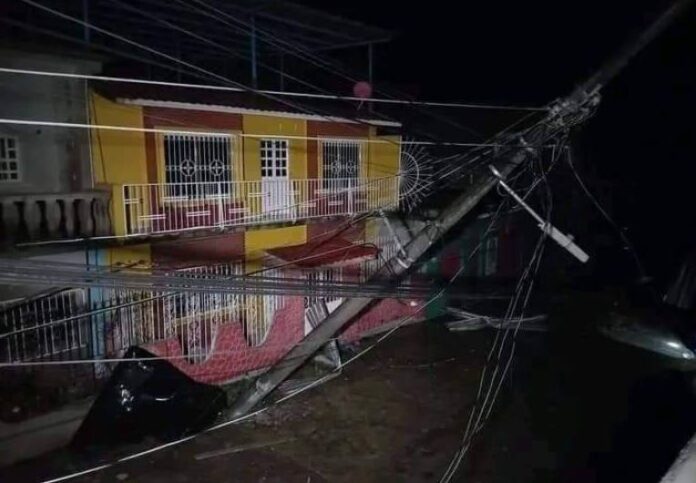A powerful tropical storm that made landfall on Mexico’s southern Pacific coast as Hurricane John has weakened, but forecasters warn that torrential rains and dangerous flash floods will continue to affect the region for several days. The storm, which hit as a Category 3 hurricane, caused widespread concern as authorities urged residents to prepare for life-threatening conditions. Two killed after Hurricane John slams Mexico.
On Monday night, Hurricane John made landfall near Marquelia in Guerrero, packing maximum sustained winds of 120 mph (193 kph), according to the U.S. National Hurricane Center (NHC). Residents of coastal areas were warned of storm surges, heavy rains, and the possibility of deadly flash floods. President Andres Manuel Lopez Obrador emphasized the importance of protecting lives, stating on social media, “Life is the most important thing—material things can be replaced.”
The National Water Commission (Conagua) predicted “extraordinary” rainfall in parts of Guerrero and Oaxaca, with some areas expected to receive over 10 inches (250 mm) of rain. Flash floods and mudslides are major concerns, particularly in the southern states of Guerrero, Oaxaca, and Chiapas, which are at risk through Thursday.
As the storm moved inland, it weakened rapidly, but its slow movement is expected to prolong the dangerous weather conditions. Schools have been closed in affected areas, and Mexico’s state power firm CFE has dispatched workers to Oaxaca in preparation for power outages.
In coastal communities like Puerto Escondido, residents scrambled to secure their properties, fearing the storm’s impact. “We’re very concerned,” said local restaurant owner Paula Sanchez, noting that hurricanes in the region have intensified in recent years.
A hurricane warning is in effect from Acapulco to Huatulco, including popular tourist destinations, while a tropical storm warning has been issued for areas further east, including the major port of Salina Cruz. The NHC has cautioned that John’s heavy rainfall could result in “significant and possibly catastrophic, life-threatening flash flooding and mudslides.”
Despite weakening, Hurricane John’s aftermath is expected to cause significant challenges for southern Mexico, with ongoing risks of flooding and landslides throughout the week. Residents in affected areas have been urged to remain vigilant and follow official safety instructions.
Key Points:
- Hurricane John’s Landfall: Hurricane John made landfall in Mexico’s southern Pacific coast near Marquelia, Guerrero, as a Category 3 storm with winds of 120 mph (193 kph).
- Torrential Rains and Flash Flood Warnings: The U.S. National Hurricane Center (NHC) warned of life-threatening storm surges, flash floods, and mudslides in the states of Guerrero, Oaxaca, and Chiapas.
- Heavy Rainfall Expected: National Water Commission (Conagua) predicted rainfall exceeding 10 inches (250 mm) in parts of Guerrero and Oaxaca, with over 6 inches (150 mm) expected in Chiapas.
- Evacuations and Precautions: President Andres Manuel Lopez Obrador urged coastal residents to seek higher ground, while authorities closed schools and prepared emergency services in affected areas.
- Hurricane Warning in Popular Tourist Areas: A hurricane warning was issued for coastal regions from Acapulco to Huatulco, with a tropical storm warning in place for Salina Cruz, home to Pemex’s largest refinery.
- Storm’s Slow Movement: Despite weakening after landfall, the slow-moving storm is expected to prolong dangerous weather conditions, including heavy rainfall and possible flash floods.
- Impact on Local Communities: Coastal residents, especially in Puerto Escondido, took urgent action to secure property as hurricanes in the area have become stronger in recent years.
- Ongoing Risks: The NHC highlighted ongoing risks of “significant and possibly catastrophic” flooding and landslides through Thursday in affected regions.



